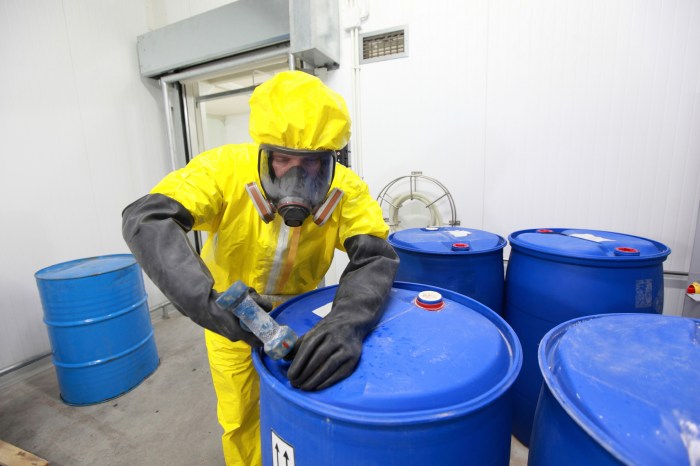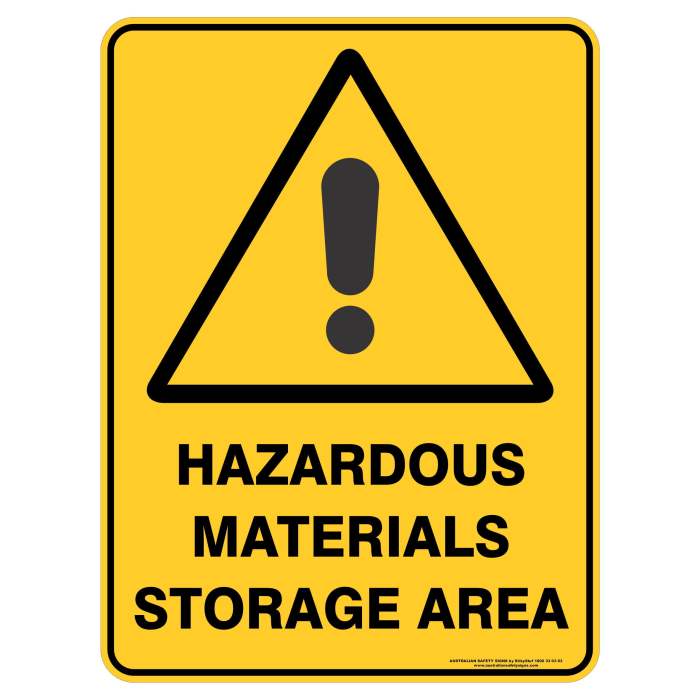As Hazardous Material Safety and Security General Awareness CVS Answers takes center stage, this opening passage beckons readers into a world crafted with meticulous care, ensuring a reading experience that is both absorbing and distinctly original. Delve into the intricacies of hazardous material handling, regulatory compliance, risk assessment, and emergency response, gaining invaluable insights that empower you to navigate this complex domain with confidence.
Understanding Hazardous Material Safety and Security

Hazardous material safety and security involve managing the risks associated with hazardous substances to protect human health, the environment, and property. It encompasses understanding the properties of hazardous materials, regulatory compliance, risk assessment, safe handling and storage, emergency response, security measures, employee training, and recordkeeping.
Common hazardous materials include chemicals, flammable substances, radioactive materials, and biological agents. They are used in various industries, such as manufacturing, healthcare, and transportation.
Regulatory Compliance for Hazardous Materials
Regulatory compliance is crucial for hazardous material safety and security. It ensures adherence to laws, regulations, and standards governing the handling, storage, transportation, and disposal of hazardous materials.
Major regulations include:
- Occupational Safety and Health Administration (OSHA) Hazard Communication Standard (HCS)
- Environmental Protection Agency (EPA) Resource Conservation and Recovery Act (RCRA)
- Department of Transportation (DOT) Hazardous Materials Regulations (HMR)
Risk Assessment and Management
Risk assessment involves identifying potential hazards associated with hazardous materials and evaluating the likelihood and severity of their occurrence. It helps determine appropriate control measures to mitigate risks.
Methods for mitigating and controlling risks include:
- Engineering controls (e.g., ventilation, containment)
- Administrative controls (e.g., training, work procedures)
- Personal protective equipment (e.g., respirators, gloves)
Safe Handling and Storage of Hazardous Materials, Hazardous material safety and security general awareness cvs answers
Safe handling and storage of hazardous materials minimize exposure and prevent accidents. Guidelines include:
- Proper labeling and identification
- Secure storage in compatible containers
- Adequate ventilation and spill containment
- Training on safe handling procedures
Emergency Response and Contingency Planning
Emergency response plans Artikel procedures for responding to hazardous material incidents. Key steps include:
- Evacuation and containment
- Notification of emergency responders
- Mitigation and cleanup
Emergency response teams coordinate with external agencies, such as fire departments and environmental agencies.
Security Measures for Hazardous Materials
Security measures prevent unauthorized access to hazardous materials. Physical controls include:
- Fencing and access control
- Security cameras and lighting
- Alarms and motion detectors
Administrative controls include:
- Background checks and security clearances
- Controlled access and inventory management
Employee Training and Awareness
Employee training and awareness are essential for hazardous material safety and security. Effective training programs include:
- Hazard recognition and risk assessment
- Safe handling and storage procedures
- Emergency response protocols
Recordkeeping and Documentation
Maintaining accurate and up-to-date records and documentation is crucial for compliance and safety. Records include:
- Material Safety Data Sheets (MSDSs)
- Inventory logs
- Training records
User Queries: Hazardous Material Safety And Security General Awareness Cvs Answers
What are the key concepts of hazardous material safety and security?
Hazardous material safety and security encompass the identification, assessment, and control of hazards associated with hazardous materials, ensuring their safe handling, storage, and disposal to prevent accidents, injuries, and environmental damage.
Why is regulatory compliance crucial in hazardous material management?
Regulatory compliance is paramount as it establishes legal requirements and best practices for hazardous material management, ensuring adherence to industry standards, protecting human health, and minimizing environmental impact.
How does risk assessment contribute to hazardous material safety?
Risk assessment is a systematic process that evaluates the potential hazards and risks associated with hazardous materials, enabling organizations to implement appropriate control measures, minimize risks, and prioritize safety.

